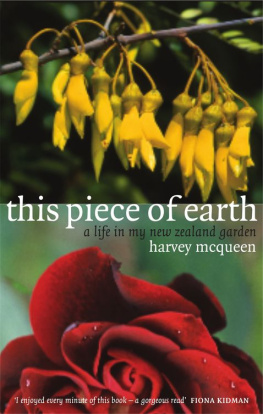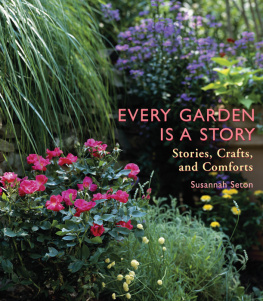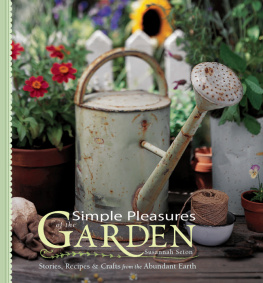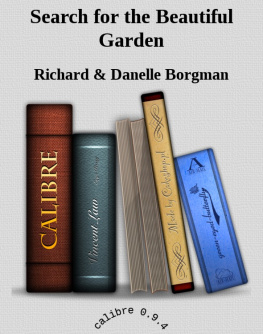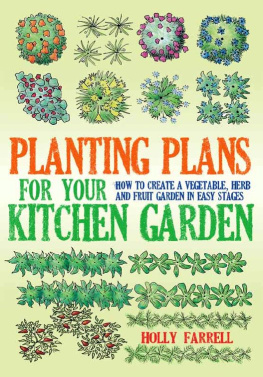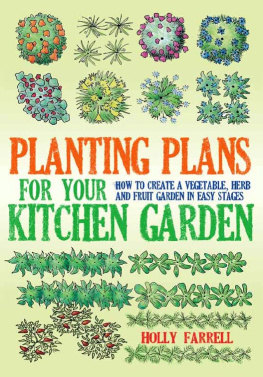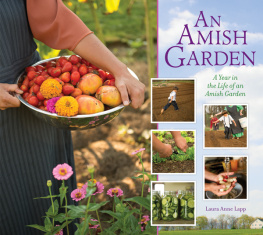Harvey McQueen - This Piece of Earth: A Life in My New Zealand Garden
Here you can read online Harvey McQueen - This Piece of Earth: A Life in My New Zealand Garden full text of the book (entire story) in english for free. Download pdf and epub, get meaning, cover and reviews about this ebook. year: 2005, publisher: Awa Press, genre: Detective and thriller. Description of the work, (preface) as well as reviews are available. Best literature library LitArk.com created for fans of good reading and offers a wide selection of genres:
Romance novel
Science fiction
Adventure
Detective
Science
History
Home and family
Prose
Art
Politics
Computer
Non-fiction
Religion
Business
Children
Humor
Choose a favorite category and find really read worthwhile books. Enjoy immersion in the world of imagination, feel the emotions of the characters or learn something new for yourself, make an fascinating discovery.
- Book:This Piece of Earth: A Life in My New Zealand Garden
- Author:
- Publisher:Awa Press
- Genre:
- Year:2005
- Rating:4 / 5
- Favourites:Add to favourites
- Your mark:
- 80
- 1
- 2
- 3
- 4
- 5
This Piece of Earth: A Life in My New Zealand Garden: summary, description and annotation
We offer to read an annotation, description, summary or preface (depends on what the author of the book "This Piece of Earth: A Life in My New Zealand Garden" wrote himself). If you haven't found the necessary information about the book — write in the comments, we will try to find it.
In this captivating autobiography, the author magically weaves the story of his lifefrom a Banks Peninsula boyhood to the Executive Wing of Parliamentwith the seasons of his Wellington garden and mouth-watering recipes from his kitchen.
This Piece of Earth: A Life in My New Zealand Garden — read online for free the complete book (whole text) full work
Below is the text of the book, divided by pages. System saving the place of the last page read, allows you to conveniently read the book "This Piece of Earth: A Life in My New Zealand Garden" online for free, without having to search again every time where you left off. Put a bookmark, and you can go to the page where you finished reading at any time.
Font size:
Interval:
Bookmark:
To Anne for suggesting the book, and for her support and encouragement during its writing
The author would like to thank Ian Wedde and the executors of the estates of Lauris Edmond and Bill Sewell for permission to quote from their work. Special thanks also to Camille Guy, Jane Parkin and Mary Varnham for comment, suggestions and assistance.
Bolingbroke
Hath seizd the wasteful king. O! what pity is it
That he hath not trimmd and dressd his land
As we his garden.
WILLIAM SHAKESPEARE King Richard the Second
A tui clucks and chortles overhead as I trim and dress my garden. Each winter, attracted first by the banksia tree next door, and then our later-flowering kowhai, he visits often, confidently fidgeting and flapping around until late spring. At least that has been his pattern for the last several years. Every now and then he whirrs across to settle at the top of our neighbours sycamore tree. A blackbird pair considers that tree their territory, but if they dont clear off at his arrival he chases them away, to return and sit carolling his mastery. The gloss and sheen of his plumage is strikingly obvious in the leafless tree. He ignores the sparrows lower down obviously a lesser breed.
My pleasure in the tui is the unpredictability of his appearance. That unpredictability, combined with his very presence, assists me in going positive into my old age. Ill enjoy his company while I can. Its haphazard, rather like my gardening. Of course there is no guarantee that hes always the same tui. But he seems to be, unless that raucous, guttural croak is a feature of all tui in our suburb.
From the wide ledge of the raised vegetable garden, our two cats also watch him with interest. They make those little deep-throat mewling noises they produce whenever they see a bird. Their twitching tails express their frustration. On the lawn there is no cover to stalk their prey. Thank goodness the tuis beyond their reach, and far too big for them to tackle. Not like last week when a fantail appeared, and they moved into hunting mode. Around here, fantails, like tui, are precious in their rarity, so I called the cats inside to the unexpected bonus of an impromptu meal. Then they contentedly settled down to sleep on the back of the front room sofa where they can see the street. I went back out to watch the birds acrobatics as it snapped up little insects lured out by a wintry sun.
The sofa is the cats favourite perch; they sit there secure and superior, watching people, dogs and cars go up and down outside. Across the road a townhouse is being built. The builder has two Cairn terriers. The cats watch intently the construction, and the ambling antics of the two small dogs. What goes on inside their little cat brains? Their names are William and Dorothy. We got them as kittens when we had just returned from a visit to the English Lake Country and the Wordsworths, brother and sister, were fresh in our minds. They are well-named. He consistently chatters and whines a lot, she is plump and placid, and they are devoted to one another. She purrs most of the time when shes awake, even when eating. He rarely purrs, is nervy but agile, an excellent mouser.
From this vantage point on the sofa they can oversee the front steps and the narrow little brick courtyard. Two large concrete urns, painted green like the front door, flank the steps. They have been there since the house was built. This winter Ive put apricot-coloured polyanthus in them. The slugs love the first flowers, but a light sprinkling of pellets ends their sport. With constant deadheading the plants continue to flower, a cheerful entry to the house.
Lavender bushes line the steps. Even in mid-winter there are honey-bees at work on a mild day. On the north side of the steps jasmine twines through the lavender and up the wooden post and railing of the porch. On the south side the purple coral pea, or hardenbergia, is an even more vigorous riot of flowers, especially in the morning sun. When the house was painted I chopped it back severely. Anne was horrified. But its a hardy Australian, and it bounced back so well I now prune it heavily every autumn and it joins the polyanthus in providing front-door cheer through the dreary winter days.
The city is Wellington, the suburb Northland, on the south-east slope of Tinakori Hill. Its named after Viscount Northland, killed in 1915 in World War 1. He was the son of the Earl of Ranfurly, who governed New Zealand from 1897 to 1904 and donated rugbys famous shield. The street is Farm Road, which tells its own story. During Ranfurlys tenure the land known as the Governors Farm, which supplied the vice-regal Thorndon residence with vegetables and dairy produce, was subdivided into residential sections. Our house, built in 1904, is close to the street, just over the saddle. The front faces east, the living rooms north, the kitchen west. The service rooms and my study face south. Annes study has French windows facing north, and a window looking out on to the back garden. Robin Hyde, journalist, novelist and poet, probably limped past the house on her way to her beloved bush and creek walks. Her parents home was just around the corner. As a young woman Hyde had had a bad fall. Her leg was badly set and she lived with lameness and pain for the rest of her life, but still managed to become the first female war correspondent to report on Chinas war with Japan in 1939.
When this place in Farm Road came on the market, I fell in love with its garden. The word place is interesting. It contains a much greater sense of belonging than section. When I was a boy, Vanstones place meant their farm and Stewarts place meant their township section. Pops place was my grandfathers farm and house. Our place was our place. Now Annes and my place is this house and garden. Although high in the Wellington hills, we have never had snow although over the years there have been several dustings on the surrounding heights. I dont like snow: boyhood memories of assisting lambing in blizzards and thigh-deep drifts.
When we arrived here in October eleven years ago the garden was full of flowers, rhododendron, daffodil, clematis, kowhai, camellia, flowering cherry, honeysuckle, jasmine, bluebell, sparaxis and iris. We had often walked past the house and admired the front of it. We lived a few streets away, in a bigger house with a big section getting beyond my control and energy. We had talked of downsizing to a sensible modern house with a small section. Instead we settled for an older house, and a garden slightly larger than I had anticipated but still compact and manageable. Its really three small, carefully landscaped areas on different levels, paths and steps discreetly persuading the eye that much more space exists, and suggesting mystery around several corners.
The top lawn is sheltered but sunny, a difficult combination to strike in this windy city. It is surrounded by a low, scallop-shell-shaped brick wall. Between this lawn and the courtyard at the back of the house is an area I call the shrubbery. On the shrubberys south side is a small, snug, sheltered lawn, enclosed by buildings and the hedge honeysuckle corner.
In the front of the house there is a very narrow bricked courtyard, behind a low brick wall. Between that wall and the street there is a grass verge, with three silver birches. To the north there is an area of asphalt to park the car.
Its been a warm dry winter. The ground is not the sodden quagmire of previous years. Not until mid-July does the last leaf fall from the flowering cherry. Confused by the mild La Nia weather, the lilac leaves last just as long. We need a good frost. There was none last winter, and the summer was a bad season for insects, black spot and wilt.
A flock of wax-eyes calls frequently to give the shrubs a winter going over, cutting back the caterpillar population. Busy attractive birds, they especially like the kowhai and Judas trees, with their lichened boughs. A host of insects inhabits this small area. The wax-eyes cleansing helps control their numbers. On a calm morning, dew-spangled cobwebs, old and new, hang everywhere, suggesting other predators at work. Pruning the shrubs a winter chore I often come across a cocoon. I dont know which are inhabited and which deserted, so if possible I leave them.
Font size:
Interval:
Bookmark:
Similar books «This Piece of Earth: A Life in My New Zealand Garden»
Look at similar books to This Piece of Earth: A Life in My New Zealand Garden. We have selected literature similar in name and meaning in the hope of providing readers with more options to find new, interesting, not yet read works.
Discussion, reviews of the book This Piece of Earth: A Life in My New Zealand Garden and just readers' own opinions. Leave your comments, write what you think about the work, its meaning or the main characters. Specify what exactly you liked and what you didn't like, and why you think so.

